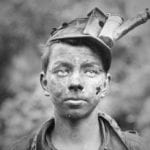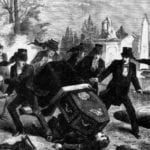 Weird Stuff
Weird Stuff  Weird Stuff
Weird Stuff  Our World
Our World 10 Ways Your Christmas Tree Is More Lit Than You Think
 Movies and TV
Movies and TV The 10 Coolest Stars to Set Sail on The Love Boat
 History
History 10 Things You Didn’t Know About the American National Anthem
 Technology
Technology Top 10 Everyday Tech Buzzwords That Hide a Darker Past
 Humans
Humans 10 Everyday Human Behaviors That Are Actually Survival Instincts
 Animals
Animals 10 Animals That Humiliated and Harmed Historical Leaders
 History
History 10 Most Influential Protests in Modern History
 Creepy
Creepy 10 More Representations of Death from Myth, Legend, and Folktale
 Technology
Technology 10 Scientific Breakthroughs of 2025 That’ll Change Everything
 Weird Stuff
Weird Stuff Ten Bizarre Facts About The Doge Meme
 Our World
Our World 10 Ways Your Christmas Tree Is More Lit Than You Think
 Movies and TV
Movies and TV The 10 Coolest Stars to Set Sail on The Love Boat
Who's Behind Listverse?

Jamie Frater
Head Editor
Jamie founded Listverse due to an insatiable desire to share fascinating, obscure, and bizarre facts. He has been a guest speaker on numerous national radio and television stations and is a five time published author.
More About Us History
History 10 Things You Didn’t Know About the American National Anthem
 Technology
Technology Top 10 Everyday Tech Buzzwords That Hide a Darker Past
 Humans
Humans 10 Everyday Human Behaviors That Are Actually Survival Instincts
 Animals
Animals 10 Animals That Humiliated and Harmed Historical Leaders
 History
History 10 Most Influential Protests in Modern History
 Creepy
Creepy 10 More Representations of Death from Myth, Legend, and Folktale
 Technology
Technology 10 Scientific Breakthroughs of 2025 That’ll Change Everything
Top 10 Everyday Objects That Have Drastically Changed Through History
The quality of life that modern society has become accustomed to is dependent on various products and utilities. People tend to take these conveniences for granted as the average person has never had to go without them. What many people are unaware of is that these objects have a rich history of development through decades of expert craftsmanship and experimentation to get them to the standard that they are now. Overtime, the demands and needs of society are constantly shifting, thus meaning that the objects that society is reliant on must also change. The list that follows will skip the obvious immense advancements in technology such as phones or computers and instead focus on the inconspicuous objects that still hold significance in most people’s lives. Here are the top ten objects that have drastically changed throughout history.
Top 10 Fruits That Have Drastically Changed
10 Makeup

Makeup has played a very important role in various cultural cosmetic standards throughout history. The earliest record of the use of makeup was during the first Egyption dynasty in 3100-2907 BC. Men and women during this time would use skin care solutions and store them in clay containers called unguent jars. The people of Egypt would later develop dark green powders that women would use to decorate their eyes. These were created by powderized minerals such as antimony.
Makeup nowadays is much more instrinctly produced and widely utilized. There are many more ingredients involved in creating makeup that are both non harmful and much more effective in altering one’s appearance. For example, lipstick is now created by melting wax and oil together while later adding color pigments and a solvent solution.[1]
9 Toilets
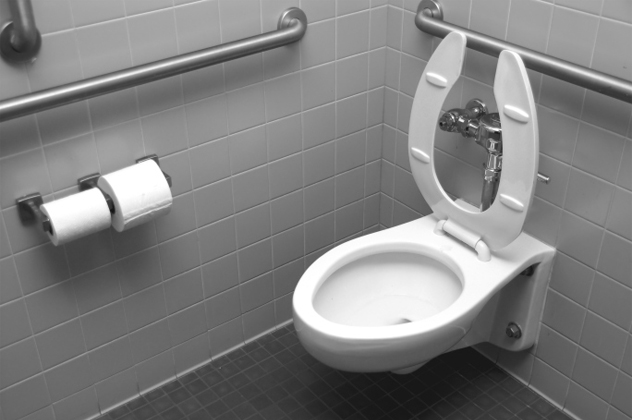
Everyone perceives toilets as a basic necessity in one’s home or public establishments. As a result, people fail to realize that the comfortable and more dignifying models that they utilize on a regular basis are actually recent innovations. For example, in Rome during 315 AD, public restrooms consisted of wooden seats with holes dug underneath them. There would be no barrier separating occupants and public restrooms housed up to 144 people.
Romans would view going to the restroom as a social interaction opportunity and used the time to chat with their friends or even complete strangers. It wouldn’t be until the 20th century where the toilet models that people have become accustomed to would begin to be invented. Around this time, toilets with flushable valves and water tanks resting on the top of the toilets themselves were available for the masses.[2]
8 Shoes

Shoes are seen nowadays as a fashion staple as opposed to the necessity for function they were used for in the past. When shoes were first created, they needed to be durable and practical for the vigorous physical activities the wearer had to perform. For instance, the earliest discovered model of footwear was in the stone age, around 3300 B.C. The shoes were made from deerskin with a sole made from bearskin. For support they were also stuffed with hay.
With the limited tools that they had at their disposal, their shoes were quite the impressive feat of ingenuity. Overtime, as the masses stepped away from physical labour occupations shoes became methods of aesthetic expression. During the renaissance, a period of immense innovation, shoes were crafted from expensive materials and were used as status symbols.[3]
7 Chainsaws

The invention of the chainsaw has had an immense impact on the trade industry. In the past, timber industries relied on sharp tools such as axes to chop down trees. This caused immense strain on workers overtime and even resulted in fatalities due to inaccurate swings causing trees to fall in unpredictable directions. In the 19th century, saws were used by Europeans to cut down trees more efficiently. Around this time, German doctors also used the earliest models of an “endless” revolving saw in medical procedures to cut through bones. These required the manual turning of a handle to keep the teeth of the saw moving.
The first electric chainsaw was invented in 1926 which was quite bulky and required two people to use. Finally in 1959, a chainsaw available for the wide public was produced which resembled the models used today.[4]
6 Guns
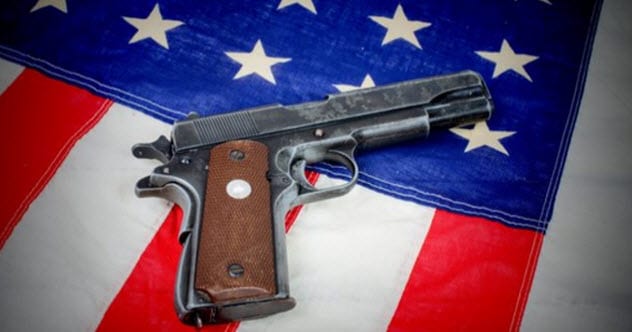
Firearms have drastically impacted warfare, politics, and culture since their early inception. Around 850 AD, chinese alchemists utilized the explosive properties of gunpowder to create weapons that could project objects at a lethal velocity. This led to the creation of the earliest models of the cannons and grenades. Eventually, handheld firearms were invented which consisted of hollow bamboo tubes, packed with gunpowder and small projectiles. These were ineffective at long ranges so they were mostly used within close quarters.
As time progressed, other countries began using gunpowder for munition purposes. In the 13th century, major innovations of the firearm spread from Asia to Europe through the creation of flintlock firearms. Western contributions to the innovation of firearms really progressed when Americans first settled. American settlers used long rifles with twisted grooves in their barrels which caused the lead bullets to spin when fired. This resulted in a much straighter and accurate shot.[5]
10 Obvious Lies That Changed The World
5 Eye Glasses

Eye glasses have gone through a number of developments throughout the course of history. Despite the fact that vision impairments are incredibly common, proper optical support has not been widely available for those in need until recently. Previous models of glasses were uncomfortable and unavailable to the mass public. As a result, many people experienced worsened eyesight and even blindness overtime. Romans first discovered the ability to utilize glass to view small texts or things at a distance. As a result, they created the first prototypes of glasses which were magnifying glasses in the shape of spheres. It wouldn’t be until the early 1700s that the familiar pair of glasses we see now came to exist.[6]
4 Bikes

Bikes are one of the most cost effective and widely accessible methods of transportation used today. However, the durable and fast bikes owned by millions across the world presently are a result of years of constant innovation. The first reported model was created by a German inventor in the early 19th century who made a steerable two handed apparatus. It did not have a chain, brakes, or pedals; it was propelled using manual force from a rider’s legs. In the 1860s, French inventors began adding wheels, chains, and pedals to their bikes. These however were incredibly uncomfortable to use and were hard to control. Finally in 1885, bikes with equal sized wheels were available to the wide public that were much more fluid to control.[7]
3 Sewing Machines
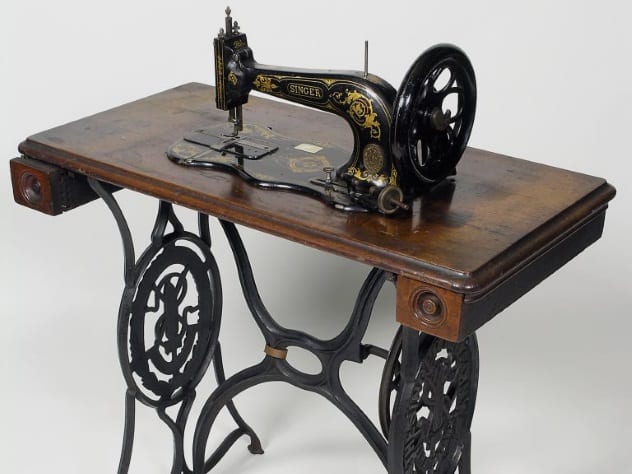
The production of clothing is an intricate and delicate process that requires competent equipment and workers to be done correctly. Before the creation of sewing machines, this process was much less efficient. Clothing was only made using hand sewing which was much slower and a skill trait that needed to be trained. In 1790, the first model of the sewing machine was designed which was powered by a hand crank.
This idea wouldn’t be brought to fruition until 1834 where an American innovator created the first functioning sewing machine. However, this creator believed that it would cause unemployment for many so he decided to avoid patenting his product. Alas, in 1851 sewing machines began finally being massively manufactured for clothing companies based on lost and found patents. These used threads from two different sources which avoided jams that made previous models unviable.[8]
2 Lamps

Indoor lighting may seem like a very basic invention, but the modern lighting devices used in most homes have gone through a number of alterations throughout the years. The first lamps used were created around 70,000 BC. These were very primitive and involved a hollow rock being filled with a burnable material soaked in animal fat.
The biggest innovation for lamps happened in the 18th century when central burners were invented. Central burns had fuel sources tightly enclosed in metal. An adjustable metal tube was used to control the intensity of the fuel burning which in turn changed the brightness of the light. Modern electrical bulbs were introduced to the public in the 1870s from Thomas Edison and Joseph Swan inventing the first electric incandescent lamps.[9]
1 Tractors
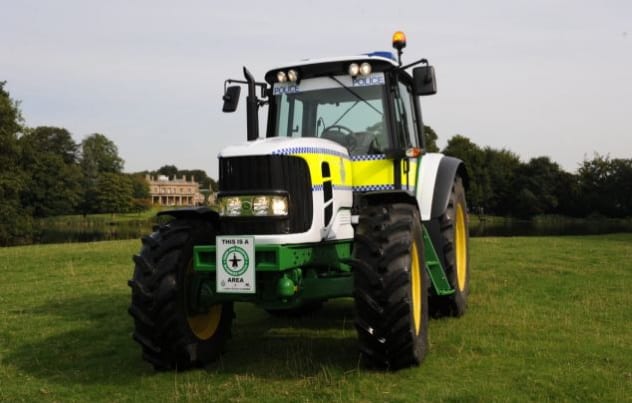
Finally, the last entry in our list is known for revolutionizing the agriculture industry and has significantly changed overtime. The invention of tractors drastically speedlined the process of farming by eliminating the need to manually plant, cultivate, and fertilize crops. The invention of the product itself was vital to supporting the exponentially growing population after the industrial revolution. Despite the ingenious applications of the original model of the tractor, it has still been tweaked throughout the years to make it even more efficient.
In 1897, the first factory dedicated to the production of steam powered tractors opened. These tractors were innovative for the time but were designed for off field driving as well. This made manufacturers have to sacrifice useful features such as larger plows for farming, thus making them less effective. In 1910, Henry Ford began producing gasoline powered tractors used exclusively for farming. These were much larger and had larger plows which in turn produced greater yields during harvesting seasons.[10]
Top 10 Short-Lived Inventions That Changed The World




